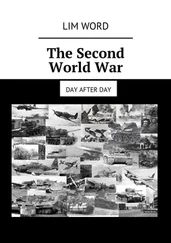The long-held opinion in Germany that Soviet war propaganda was responsible for the violence against civilians, and women in particular, and that the military leadership had encouraged it needs to be revised. The fact nevertheless remains that the acts of violence could not be prevented. The chronicle of events from the Soviet reconquest to the advance on Berlin and the occupation of the German capital provides a framework for a large number of terrible cases of sexual aggression. On account of their significance at the time, their exploitation for propaganda purposes and later instrumentalization in the Cold War, and not least the one-sided focus by scholars on the crimes committed by the Red Army, the often brutal acts by the Soviet soldiers have remained as the abiding image in the collective memory. A closer look at the actors, their war experience, their expectations and their indoctrination reveals the fateful way in which the warring parties and civilian population interacted and how their actions, prejudices and expectations were almost inevitably mutually reinforcing. The descriptions of the hunting down by Soviet combatants of German victims are like a preordained choreography, in which both sides knew their roles and played them out as if remotely controlled.
Immediate grounds
The explanations for the mass rape will be looked at in greater detail later on. For the time being, we can say that, from the individual soldier’s point of view, there were immediate grounds for justifying such behaviour. One such ground was the motive of revenge for crimes committed by the German Wehrmacht and the entire Nazi system; revenge for the invasion of their homeland and the attacks on their families; revenge for their own dead soldiers, for shot partisans, murdered prisoners of war and slave labourers; revenge for the other victims like Jews and other persecuted groups whom the Red Army soldiers encountered as they liberated the camps; revenge for the pain and horror experienced by the soldiers themselves, particularly in the last weeks of senseless resistance by the Germans; and of course revenge for rapes by German soldiers. [83] The motive of revenge is convincingly discussed by Norman M. Naimark, most recently in ‘The Russians and Germans: Rape during the War and Post-Soviet Memories’, in: Branche and Virgile (eds.), Rape in Wartime , pp. 201–19.
These grounds were used and reinforced by ideological propaganda to foment class hatred and rage at the humiliation of the Russian people by the Germans. Catherine Merridale, an expert in the history of the Red Army, saw in the Soviet soldiers a long bottled-up pain, ‘not only in the war but through decades of humiliation, of disempowerment and fear’. The victory over Germany had given them the opportunity ‘consciously or not… [to vent] anger that had built up through decades of state oppression and endemic violence in the Soviet Union’. [84] Merridale, Ivan’s War , p. 263.
This motive applies particularly to those Red Army soldiers whose lives had been affected by Stalin’s starvation policy, gulags and the Great Purge, and finally by the hardships of war.
Apart from the experience of German occupation and looting, frustration at the soldiers’ own position in society and the army could be an explanation for the violence. We shall see that this also applied to the colonial soldiers in the French Army, who committed massive acts of rape in the south and south-west of Germany, and to the underprivileged African American soldiers in the US Army, who also risked their lives for a country that segregated them. And it also applies to other underprivileged groups in these armies.
A further motive for the violence at the end of the war was the resentment felt at the relative prosperity of the Germans. Many Soviet soldiers came from underdeveloped regions and could only dream of the running water, bicycles, watches and well-stocked cellars the enemy possessed. The wealth they encountered in the conquered land was a serious affront and was used for propaganda purposes to explain the looting of their own country by the Germans.
Hate, revenge and resentment were already generally accepted at the time as the reason for sexual aggression. [85] See Richard Bessel, Germany 1945: From War to Peace (London 2009), pp. 148–68.
Internal military structures are also cited as explanations for the perpetrators’ behaviour: the constant fluctuations in troop units, changing billets, house searches and requisitions, access to large quantities of alcohol and lack of discipline. All of these are good explanations, but in my opinion they do not shed sufficient light on the phenomenon of mass rape at the end of the war.
We cannot explain satisfactorily why all of these motives led specifically to sexual aggression without taking into account historical gender roles. Both the Red Army and the US Army also raped the women of their own ‘brothers’ and Allies – Poles and French women – as they advanced on German territory. And it wasn’t only the wives, mothers and daughters of Nazis but also those persecuted by the Nazi regime. The acts were therefore based on a combination of ethnic and national revenge and power motives and gender-political factors, which we shall consider later after looking at the acts of rape committed by the Americans.
3
SOUTH GERMANY – WHO WILL PROTECT US FROM THE AMERICANS?
They softly entered the court and raped me and all the women. Even the old directress, who I can still hear screaming: ‘Let me go, I’m an old woman.’
In a village near Pirmasens
[1] Stephan Hebel (ed.), Alltag in Trümmern: Zeitzeugen berichten über das Kriegsende 1945 (Berlin 2005), p. 137.
There are various reasons why the incidence of rape in the West was uncommon. One reason is that there was apparently a sufficient number of German women who were so attracted to the occupying soldiers that there was no need for force.
Günter Sagan in his book about the end of the war in 1945
[2] Günter Sagan, Kriegsende 1945: Die dramatischen Wochen vor und nach der Kapitulation (Petersberg 2008).
At the end of the war, Moosburg an der Isar, 45 kilometres north-east of Munich and not far from the present-day airport in Erdinger Moos, was a small town with 10,000 inhabitants, dominated by two church towers of the same height. On the outskirts of the town was a large prisoner-of-war camp with as many as 200,000 inmates of all nationalities. In early March 1945, several thousand British and American officers were transferred there from a camp in Upper Silesia. It is said that the officers had to walk 70 kilometres and carried the weakened German guards accompanying them on their backs.
Six days before the end of the war, mayor Hermann Müller, who had been in office since 1933, decided to surrender the town without resistance. On 29 April 1945, American negotiators came to discuss the handover. At first everything ran smoothly. The commandant and mayor quickly agreed on the terms of surrender. The next day, however, armed Waffen-SS members began to dig in. An American officer said in rage: ‘So that’s what the word of honour of a German officer means.’ American tanks rolled slowly towards the town.
The battle for Moosburg began at 10.15 a.m. The SS had to cede to the superior power and withdrew behind a bridge over the river Amper. The inhabitants took shelter in their cellars. Shells exploded. One of the church towers also came under attack. Fires broke out. There was fighting in front of the church. The first GIs appeared in the parish house. The square in front of the minster was full of tanks. The fighting continued in the distance. The SS had retreated over the Isar and blown up the bridge. Some of the German soldiers were hiding in houses. It was reported later that two teenage Hitler Youth members had shot at American tanks with revolvers. [3] Pfister, Das Ende des Zweiten Weltkriegs , pp. 844–5.
Читать дальше











